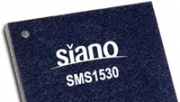Mobile TV: A path to the future

At the 2011 NAB Show, a Super Session titled “Mobile TV: A Path to the Future” will focus on what the future of mobile TV will look like and how consumers will embrace it. Alon Ironi, CEO of chip manufacturer Siano, which recently released a chip for mobile DTV devices, will be a panelist. Broadcast Engineering recently spoke with him about his experiences in and vision for mobile DTV.
MTVU: So far, we’re seeing mobile DTV implemented as accessories. Will it evolve beyond that?
Alon Ironi: The first wave of products will be accessories for PCs, tablets and smart phones; this is very typical in industries like this. The first wave is exhibited via accessories because the risk by the device makers is smaller. We saw similar things years ago with WiFi providers, when the first implementation of WiFi for PCs was minicards and dongles. Then the technology became embedded. We think we’re going to go through a similar process with mobile TV. By Christmas this year, we’ll see a lot of accessories. It’ll probably be one of the hottest products in the Christmas season sales. But, we already have a lot of customers that are building embedded devices. In spring or early summer of 2012, we’ll see embedded products and then regular-feature phones with embedded solutions by the end of 2012.
MTVU: You’ve been in the mobile TV market since 2004. How have you seen it evolve?
AI: We believed the first market was going to be the European market. That market didn’t happen the way we were hoping. We ended up doing very well in Asian markets, particularly in China and Korea. Then we saw success in Latin America, using a technology very similar to the one used in Japan. The market started there about 16 months ago and picked up during the FIFA Cup, since they’re crazy about soccer. The United States is going to be, for Siano, the fourth market. We’re very optimistic about the U.S. market.
MTVU: And yet Media FLO ended up failing.
AI: It wasn’t successful because it was too expensive; a lot of people didn’t subscribe. Second, the content was 100 percent nationwide content. They were going for a nationwide product, and it turns out most Americans want local content. Another reason for the failure is that the mobile operators couldn’t really offer nationwide coverage because there were places they didn’t have spectrum. That was a problem for the mobile operators in terms of perceived quality.
The professional video industry's #1 source for news, trends and product and tech information. Sign up below.
The present attempt is different in more than one way. The service is free of charge, which makes a big difference, and the emphasis is on local content. Each and every metropolitan center already has or will have its own bouquet of channels, typically 12 channels out of which the majority will be local news and so on. In addition, the energy this time comes from the broadcasters, not the mobile operators. The broadcasters view this as their own service. They don’t expect mobile operators to promote it or offer it as a service. We don’t need the active support of the mobile operator.
MTVU: What’s the core of the business plan?
AI: The source of revenue for broadcasters is advertising. The one thing they require is some kind of audience measurement. Collecting this information at the receiver side is easy, trivial. In order to transfer it from the terminal, the plan is for each device to have to be connected at least once a week through WiFi, and then automatically that info will flow over the Internet to the broadcasters. There will be a conditional access mechanism, so if you don’t connect your device to WiFi, it will be disabled. If you do, the service continues for another week. The whole purpose of this back channel is to allow audience measurement.
When devices are available at the stores and promotions are conducted by broadcasters, then we can start judging. So a year from now, you and I will be able to sit down and talk about failure and success.
